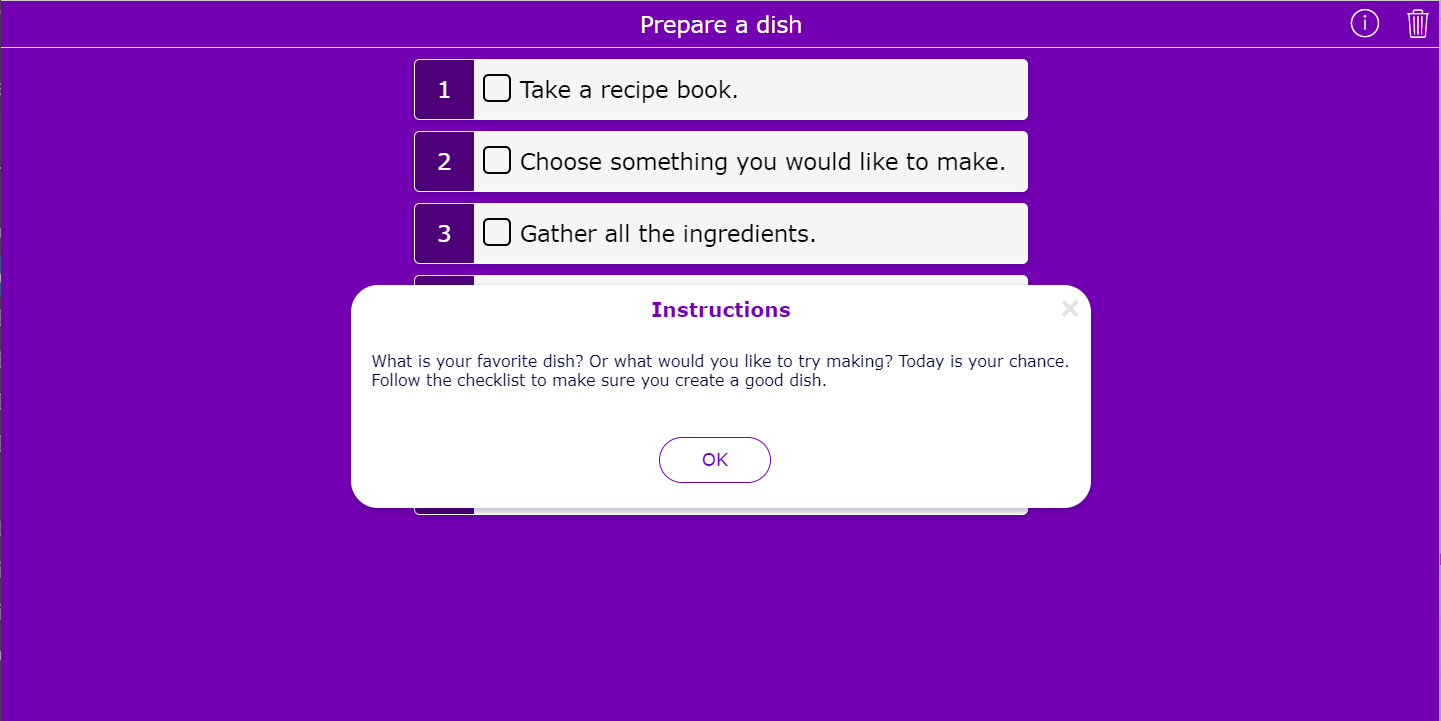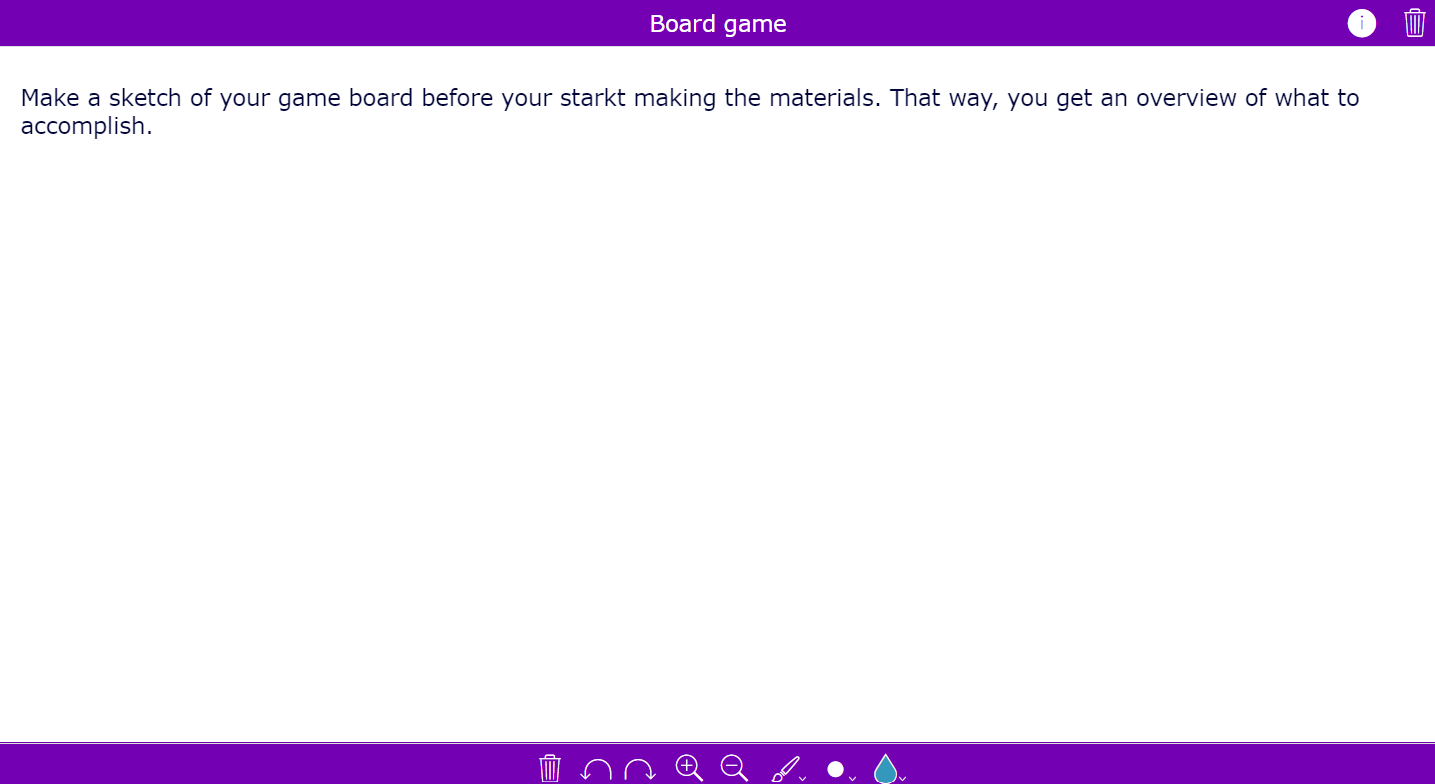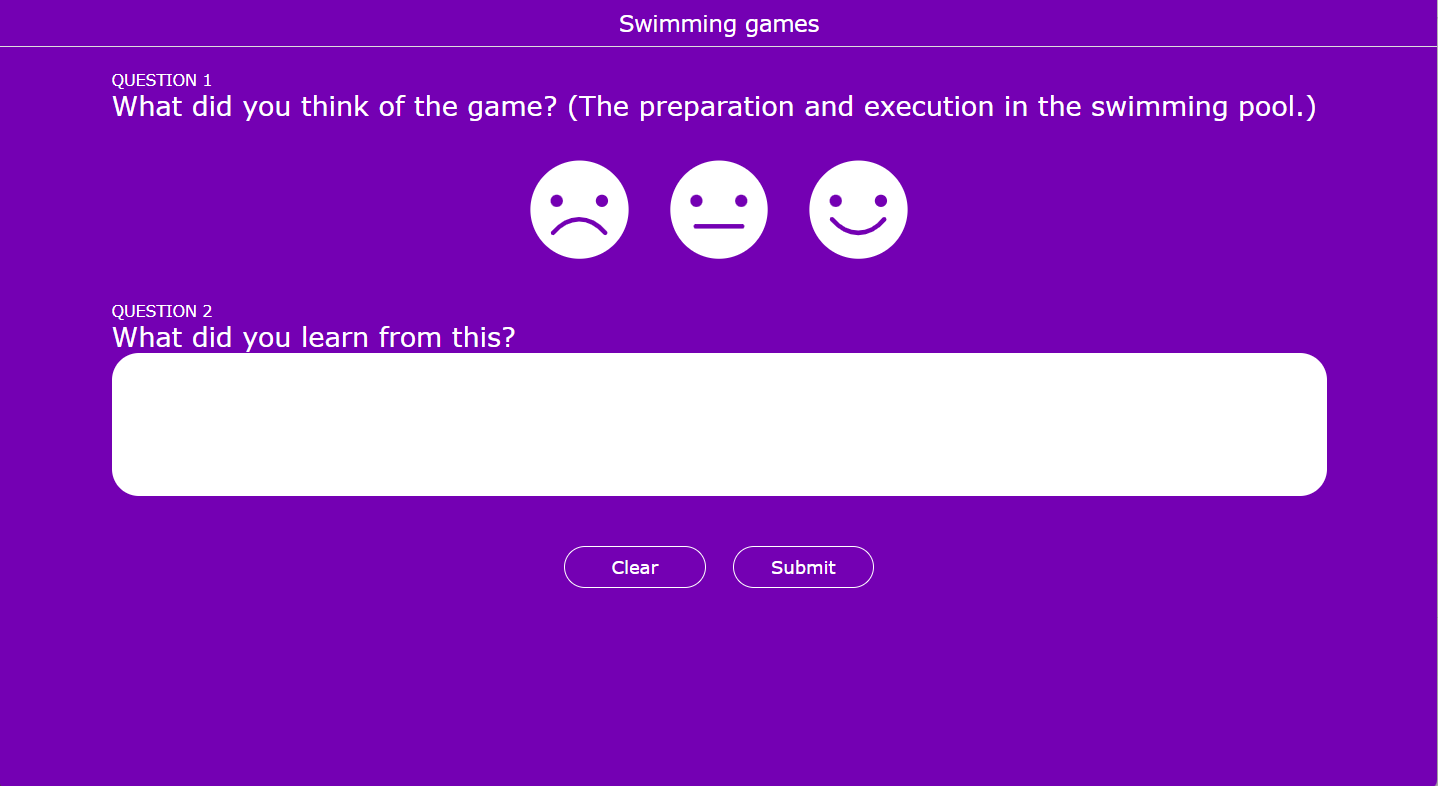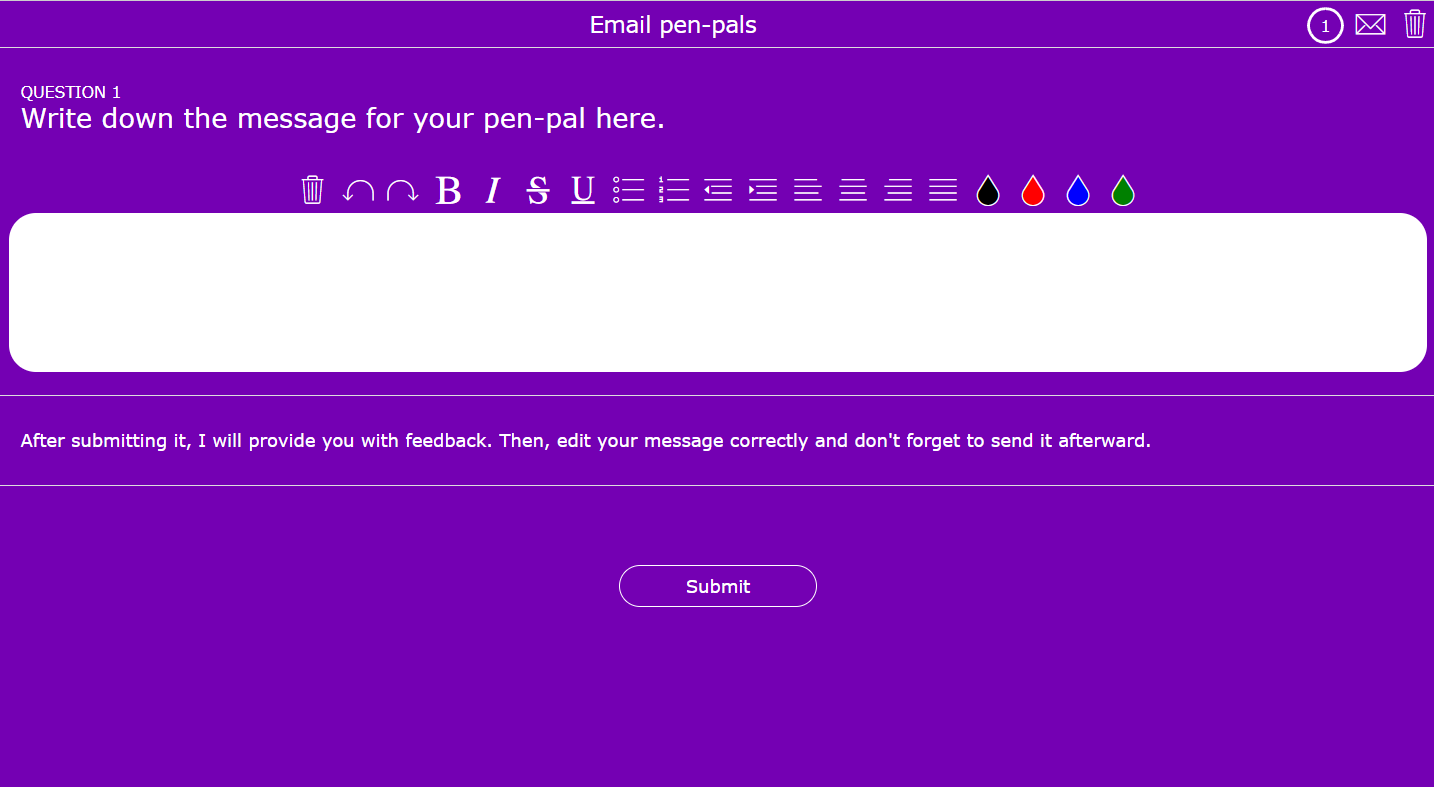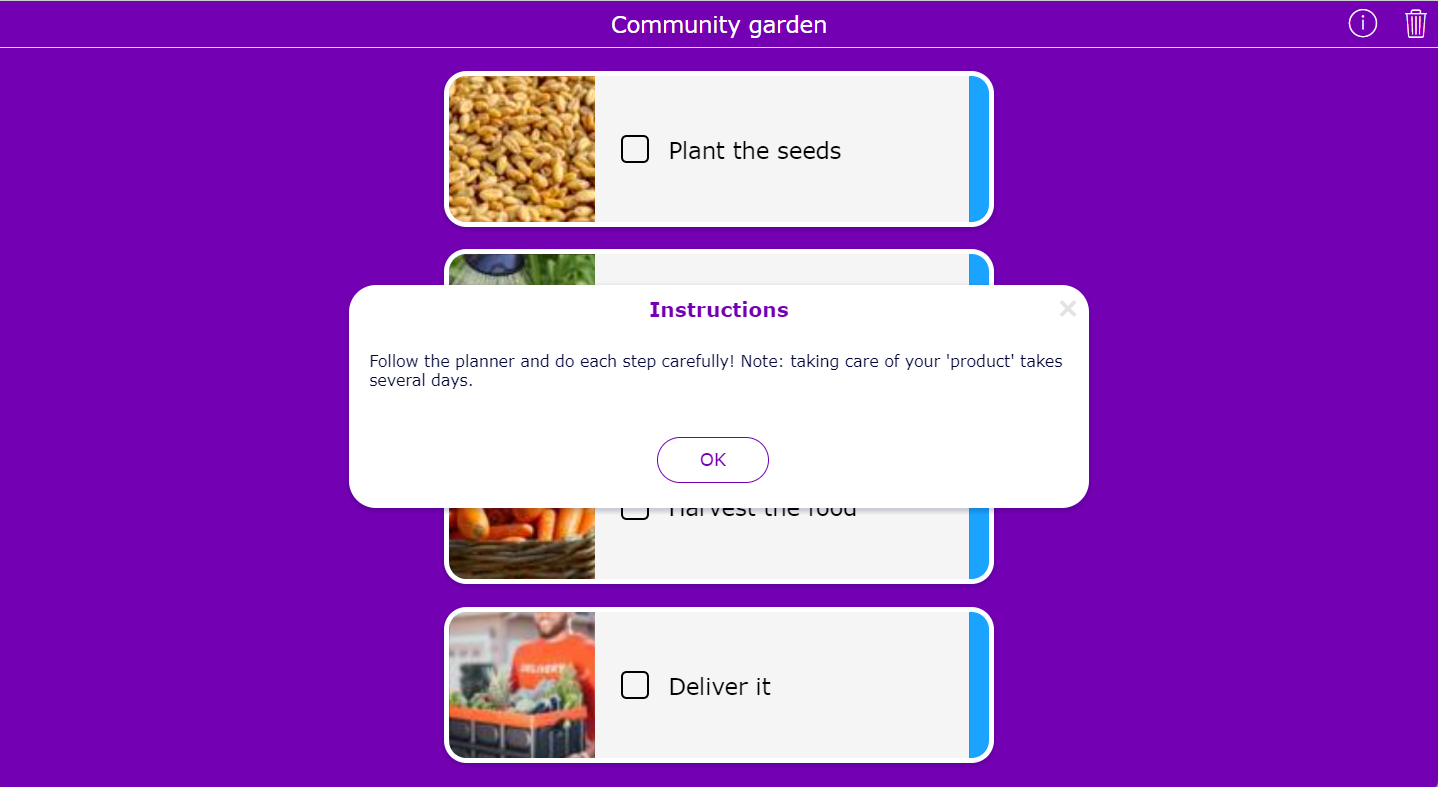20+ creative alternative homework ideas for teachers
 Lucie Renard —
Lucie Renard —
When giving homework, it must always be based on learning goals your students have to reach, just like in your lessons. But it’s sad to see that lots of teachers are using homework as extra lesson time. Of course, as a teacher, you’re on a clock. But that doesn’t mean your students have to suffer from it and keep working on those boring textbooks and worksheets at home.
Consider goals like attitudes, real-life experiences, and practice, physical exercise, social encounters, creative solutions, and philanthropy as crucial as your lesson goals. These are things students don’t just pick up in your classroom. These are things they pick up in life.
In this blog post, I’ll give you some innovative homework ideas that will engage your students more. These alternatives to traditional homework will thereby also teach your students new things that can’t be taught in the classroom. You will find a variety of homework ideas: online and offline.
I will mention homework alternatives for primary school and high school. Some of these ideas can be changed a little bit, so they are the perfect fit for the right audience.
20 Creative homework ideas
You can divide homework tasks into the following themes or categories:
- Crafts & arts
- Outdoor activities & outings
- Games and activities
- Physical activities
- Digital or computer activities
- Philanthropy & social work
💡 Good to know: all the ready-to-use homework activities are created with BookWidgets. You can easily create activities like these yourself or duplicate an activity below for free, edit it if needed, and share it with your students. You can do so in the examples separately, or you can find all the homework examples in the BookWidgets Blog group folder.
Crafts and arts homework
1. Prepare a dish from a recipe book
 Cooking combines courses and goals like comprehensive reading, chemistry and math. Students won’t notice, but they have to understand the recipe in order to complete the dish. They have to measure and weigh all the ingredients and they learn about how the ingredients react with each other. Fascinating, isn’t it?
Cooking combines courses and goals like comprehensive reading, chemistry and math. Students won’t notice, but they have to understand the recipe in order to complete the dish. They have to measure and weigh all the ingredients and they learn about how the ingredients react with each other. Fascinating, isn’t it?
2. Make a board game
 This is definitely one of the most creative homework assignments. Let your students come up with an idea for a board game about the lesson content. They have to make cards, and pawns, draw, write, cut, and paste. They have to use their imagination and inventive ideas to create a coherent board game.
This is definitely one of the most creative homework assignments. Let your students come up with an idea for a board game about the lesson content. They have to make cards, and pawns, draw, write, cut, and paste. They have to use their imagination and inventive ideas to create a coherent board game.
3. Create a birdhouse
 Birdhouses are good for the bird population. Besides that, students will need to use their practical skills to accomplish the challenge. They will have to measure all the parts and handle tools they’ve never used before. They will learn how to read a blueprint or how to create one. If you’re dealing with older students, it’s definitely a good idea to let them sketch and draw their own bird-dreamhouse.
Birdhouses are good for the bird population. Besides that, students will need to use their practical skills to accomplish the challenge. They will have to measure all the parts and handle tools they’ve never used before. They will learn how to read a blueprint or how to create one. If you’re dealing with older students, it’s definitely a good idea to let them sketch and draw their own bird-dreamhouse.
In this example, younger students learn how to make their own birdhouses by watching a video.
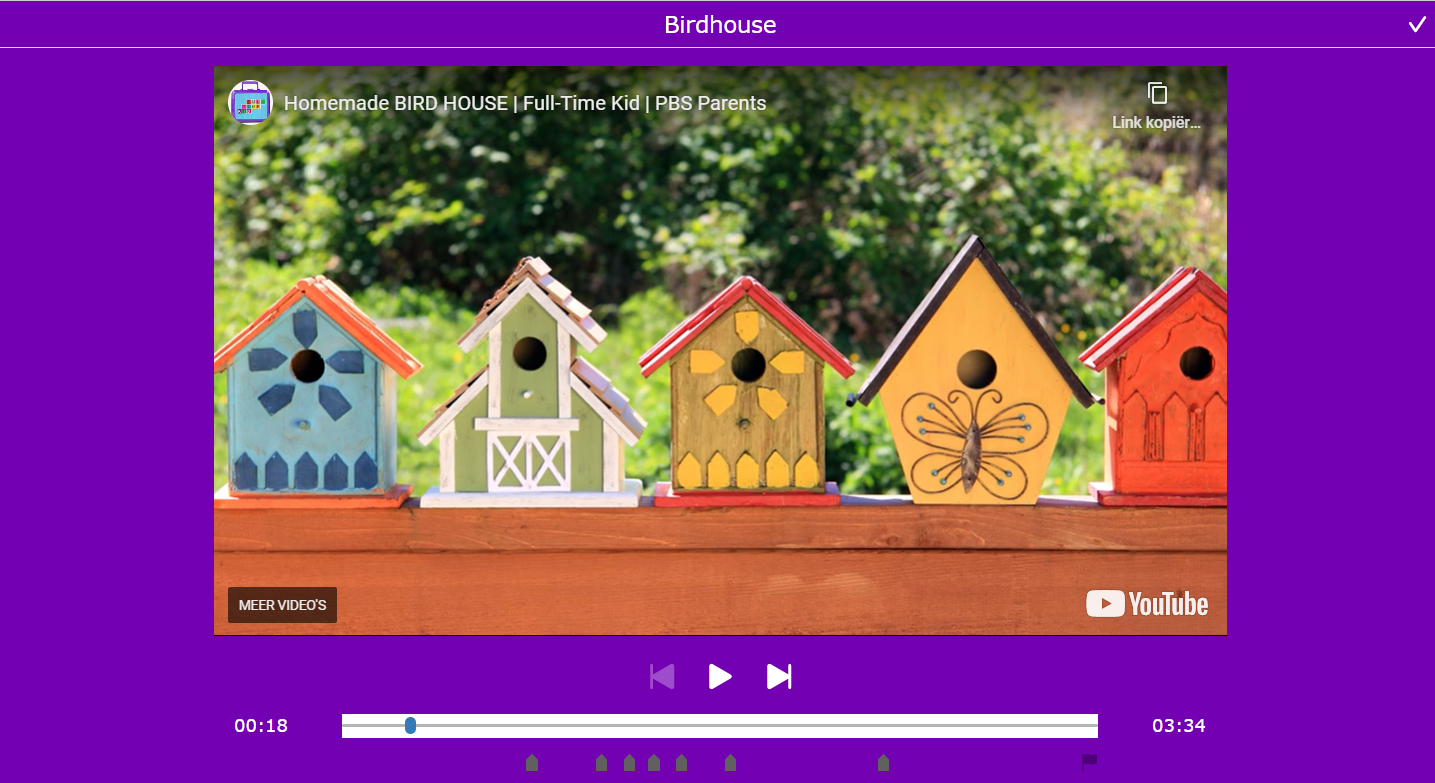
4. Transform a fictional book character into a hand puppet
 A book review can be fun and creative as well. Let your students transform a book character into a hand puppet? Students have to read the book in order to know what the book character looks like. Afterward, they have to tell what’s the book about with their hand puppet.
A book review can be fun and creative as well. Let your students transform a book character into a hand puppet? Students have to read the book in order to know what the book character looks like. Afterward, they have to tell what’s the book about with their hand puppet.
Outdoor homework activities and outings
5. Coupon game
 Let your students gather as many coupons as they can by going to one single store. Let them write down the original price of the products and then calculate the discount. Which students come out the cheapest? This math homework activity teaches the students to calculate percentages in real life.
Let your students gather as many coupons as they can by going to one single store. Let them write down the original price of the products and then calculate the discount. Which students come out the cheapest? This math homework activity teaches the students to calculate percentages in real life.
Students can also go grocery shopping with their parents. Here, they have to read the ingredients of the products and help their parents choose the healthiest products for the best prices, figure out the best deal between the sizes of items, …
6. Visit the zoo
 Let your students visit a zoo and be the family guide. They have to read the map or create their own map afterward. You can also let them translate or look up the translation for a foreign language of every animal they visit.
Let your students visit a zoo and be the family guide. They have to read the map or create their own map afterward. You can also let them translate or look up the translation for a foreign language of every animal they visit.
7. Visit the local dumping ground or container park
 There are a few lessons, students can learn from this visit. Lots of people throw away perfectly recyclable things you can still use or give a new life. Let them (if possible) pick out a few pieces and give them a new life. The purpose of the tool may be something totally different. Students will also see that the amount of (plastic) waste is still immeasurable. Hopefully, it will encourage them to reduce their own waste consumption.
There are a few lessons, students can learn from this visit. Lots of people throw away perfectly recyclable things you can still use or give a new life. Let them (if possible) pick out a few pieces and give them a new life. The purpose of the tool may be something totally different. Students will also see that the amount of (plastic) waste is still immeasurable. Hopefully, it will encourage them to reduce their own waste consumption.
8. Build a tree house
 Students go to the forest and build their own tree house. First, students have to come up with a plan of a treehouse. Then, they can start measuring, sawing, and building. Let them decorate the tree house with objects from the forest. Students learn how to sketch & draw and how to replicate a “blueprint” or a drawing in real life. They learn to appreciate nature, handle tools and go outside from time to time.
Students go to the forest and build their own tree house. First, students have to come up with a plan of a treehouse. Then, they can start measuring, sawing, and building. Let them decorate the tree house with objects from the forest. Students learn how to sketch & draw and how to replicate a “blueprint” or a drawing in real life. They learn to appreciate nature, handle tools and go outside from time to time.
Games and activities as homework
9. BookWidgets games
 Assign fun learning games to your students. With BookWidgets your students are gaming but also learning. As a teacher, you can put your lesson content into a crossword riddle, a word search, a pair-matching exercise.
Assign fun learning games to your students. With BookWidgets your students are gaming but also learning. As a teacher, you can put your lesson content into a crossword riddle, a word search, a pair-matching exercise.
Here’s an example for the elementary classroom:
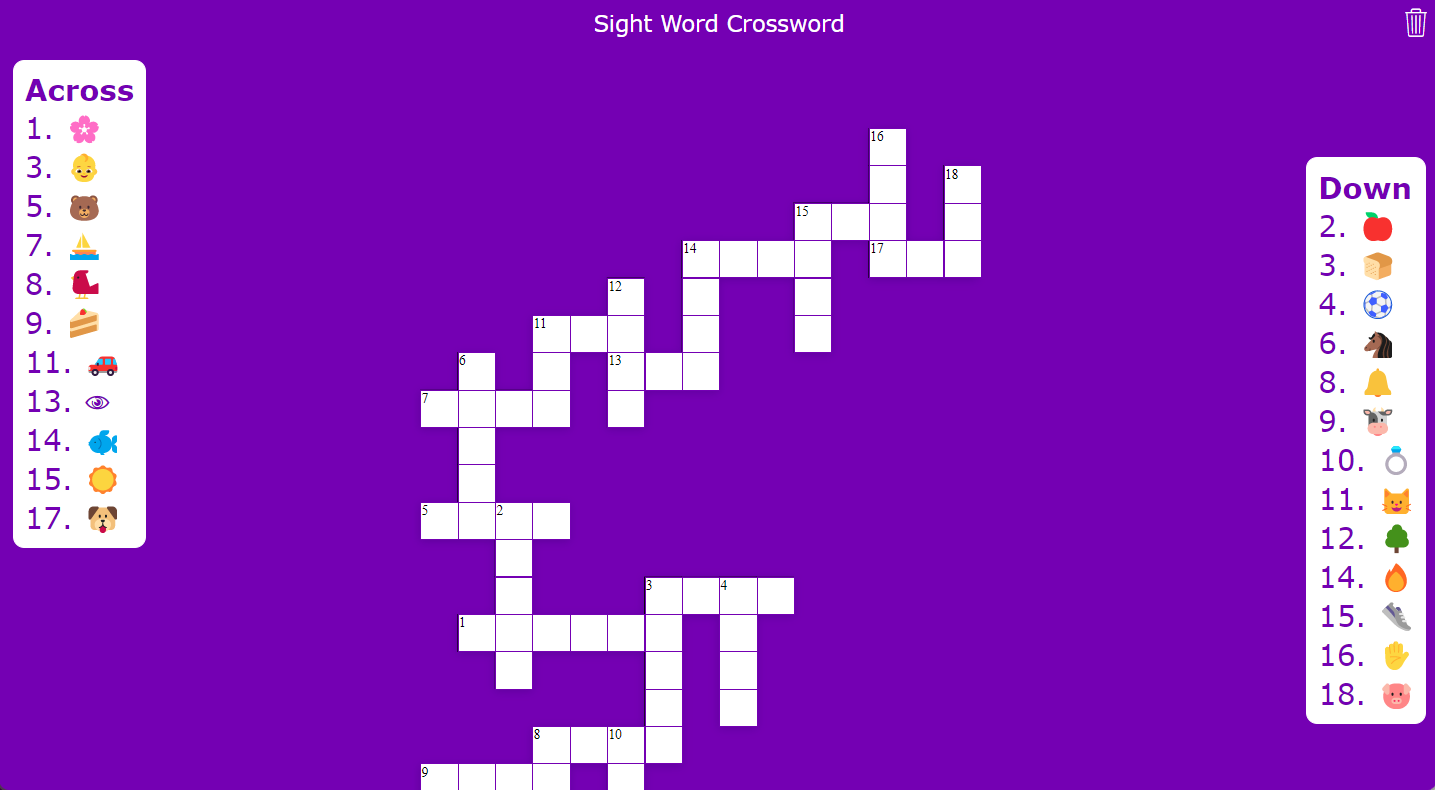
Here’s an example for high school students:
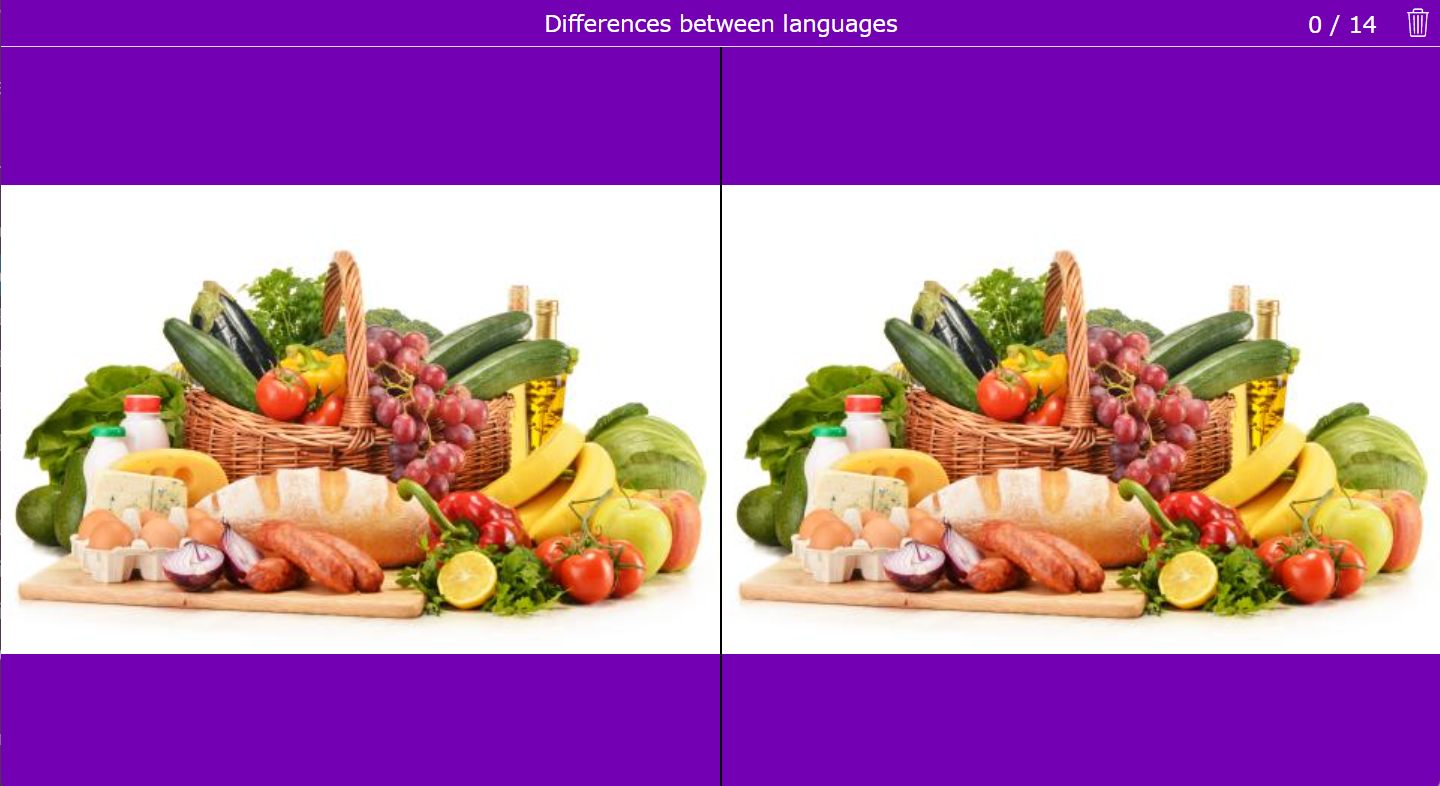
10. Minecraft
 Let your students build a replica of the school or of their house in Minecraft. It will teach them orientation, and it will teach them to read the instructions and follow them. In order to build a replica of their house, students have to measure the areas in the complete house. This means that they will learn how to calculate areas and volume as well.
Let your students build a replica of the school or of their house in Minecraft. It will teach them orientation, and it will teach them to read the instructions and follow them. In order to build a replica of their house, students have to measure the areas in the complete house. This means that they will learn how to calculate areas and volume as well.
11. Play Cards
 A lot of card games like hearts, patience, bridge, poker, … require a good amount of common sense (and counting). Encourage your students to visit their grandparents and play a game with cards. Their grandparents or family will love it! I always enjoyed playing cards with my grandparents, even if they couldn’t handle their losses!
Would you like to make it more challenging? Let them use this randomness widget activity. By spinning the wheel, a game will appear, and before they can get started, they need to read the instructions.
A lot of card games like hearts, patience, bridge, poker, … require a good amount of common sense (and counting). Encourage your students to visit their grandparents and play a game with cards. Their grandparents or family will love it! I always enjoyed playing cards with my grandparents, even if they couldn’t handle their losses!
Would you like to make it more challenging? Let them use this randomness widget activity. By spinning the wheel, a game will appear, and before they can get started, they need to read the instructions.
12. Play Zoo Tycoon or Rollercoaster Tycoon
 I know what you’re thinking… “Do we really need to encourage students to play games?”. Yes, you do. In these two games, students need to build a zoo or a theme park. But that’s not all. They have to solve problems all the time. They have to gather money to keep on building and to make the park profitable. This game teaches students how to handle money and how to solve problems. And it’s fun as well. That’s exactly the point. Students will learn and remember more quicker when they are interested in what they are learning.
I know what you’re thinking… “Do we really need to encourage students to play games?”. Yes, you do. In these two games, students need to build a zoo or a theme park. But that’s not all. They have to solve problems all the time. They have to gather money to keep on building and to make the park profitable. This game teaches students how to handle money and how to solve problems. And it’s fun as well. That’s exactly the point. Students will learn and remember more quicker when they are interested in what they are learning.
Physical homework activities
13. Rope skipping
 Rope skipping is the perfect sport to teach and test agility. Encourage students to go rope skipping and combine it with a game.
Rope skipping is the perfect sport to teach and test agility. Encourage students to go rope skipping and combine it with a game.
Many rope-skipping songs let your students do different tricks while rope-skipping. This is an excellent opportunity for homework as well. Ask your students to transform a rope skipping song into a song with lesson content. Let them count or spell or even sum up the different states or capitals. To engage their lifestyles even harder, you can additionally give them the assignment to create a TikTok in which they are jumping and singing.
Click here to see how you can get Tiktok more involved in the classroom.
14. Walking quest
 In a lot of local towns, associations organize walking quests. Students have to go on a walking tour, and they get a paper with pictures on it. They have to find the points in pictures on their way and put them in the right order. This is a fun activity that requires your student’s attention as well.
In a lot of local towns, associations organize walking quests. Students have to go on a walking tour, and they get a paper with pictures on it. They have to find the points in pictures on their way and put them in the right order. This is a fun activity that requires your student’s attention as well.
If there aren’t any walking quests in the neighborhood, you could ask your students to create a walking quest like this for their fellow students. What a fun day it will be!
15. Obstacle Quiz
 Students have to create a quiz out of the lesson materials. This lets them work with the lesson material, and this helps them remember it better. Besides that, they have to make a game out of it. It’s not an ordinary quiz: it’s a quiz with challenges.
Students have to create a quiz out of the lesson materials. This lets them work with the lesson material, and this helps them remember it better. Besides that, they have to make a game out of it. It’s not an ordinary quiz: it’s a quiz with challenges.
In order for students to answer the questions, they have to run and pass a challenging parkour. This is a fun homework exercise, and in the end, it’s a great lesson starter or lesson end.
16. Swimming games
 Ask your students to go swimming after school or on Sunday morning. They also have to create plasticized cards from A to D attached to a cord with a weight. They have to prepare fun questions about the lesson material or just questions about the world. The student takes with their family and starts the “swim quiz”. The answers are at the bottom of the pool and participants have to dive up the correct answer (or letter).
Ask your students to go swimming after school or on Sunday morning. They also have to create plasticized cards from A to D attached to a cord with a weight. They have to prepare fun questions about the lesson material or just questions about the world. The student takes with their family and starts the “swim quiz”. The answers are at the bottom of the pool and participants have to dive up the correct answer (or letter).
After the activity, they can fill out an Exit Slip:
Digital or computer homework activities
17. Create a picture album
 Many online services make it easy for you to create an online picture album. Let your students do the same with their holiday pictures. They have to write a few sentences under each picture as well.
Many online services make it easy for you to create an online picture album. Let your students do the same with their holiday pictures. They have to write a few sentences under each picture as well.
This teaches them to handle the online software, add pictures and write without spelling mistakes. And of course, creating memories is so much fun!
18. Video job application
 Job applications are still mostly done by email. This homework task challenges students to dig deeper and to present them by using video. Students learn how to put together an application, learn how to edit their video, and how to present themselves.
Job applications are still mostly done by email. This homework task challenges students to dig deeper and to present them by using video. Students learn how to put together an application, learn how to edit their video, and how to present themselves.
19. Your life in 10 minutes - video
 Another great challenge is this one: let your students shoot a video of 10 minutes about their own lives and what they have been through. Students will have to write a script as well and make a storyboard. Then they have to start filming and editing the movie. You’ll get to know your students, and they will get to know each other.
Another great challenge is this one: let your students shoot a video of 10 minutes about their own lives and what they have been through. Students will have to write a script as well and make a storyboard. Then they have to start filming and editing the movie. You’ll get to know your students, and they will get to know each other.
20. Email pen-pals
 This homework task is already an old one, but it has so much potential. Find a school in another country, speaking another language willing to do the same. Every student gets one pen-pal, and they write emails to each other in the language of their pen-pal. It encourages them to write in a foreign language. They will also see the value in it as they will have to be able to speak another language in their work later in life.
This homework task is already an old one, but it has so much potential. Find a school in another country, speaking another language willing to do the same. Every student gets one pen-pal, and they write emails to each other in the language of their pen-pal. It encourages them to write in a foreign language. They will also see the value in it as they will have to be able to speak another language in their work later in life.
Is it still too complicated? Read the messages from your students, before they send them, and provide them with some feedback.
Philanthropy and social homework
21. Grow a community garden
 A lot of people don’t have much money to spend on food or have no access to food at all. Growing a community garden with vegetables can help. This alternative homework task is much bigger than the others. It requires motivation and perseverance. It’s a long-term (school) project that’s not done after one day. Students will have to plant the seeds, grow the greens, harvest the food, and deliver it. To make sure they don’t forget anything, you can offer them a planner. 👇
A lot of people don’t have much money to spend on food or have no access to food at all. Growing a community garden with vegetables can help. This alternative homework task is much bigger than the others. It requires motivation and perseverance. It’s a long-term (school) project that’s not done after one day. Students will have to plant the seeds, grow the greens, harvest the food, and deliver it. To make sure they don’t forget anything, you can offer them a planner. 👇
22. Help in a retirement home
 Lots of elderly people are all alone. They would give anything for a visit from a nice and friendly face. Let your students help out in a retirement home. Let them talk to the people, play cards, prepare fun activities, and so on. Putting a smile on these people’s faces will light up the world, even if it’s just a little bit.
Lots of elderly people are all alone. They would give anything for a visit from a nice and friendly face. Let your students help out in a retirement home. Let them talk to the people, play cards, prepare fun activities, and so on. Putting a smile on these people’s faces will light up the world, even if it’s just a little bit.
23. Help at a homeless shelter
 A lot of students don’t have a clue what’s happening in their own neighborhood. It’s possible that they don’t even understand the word “poverty”. Let them help in the homeless shelter, and give the homeless food. Let them play cards with them and just talk to them. This challenge can be very confronting, but also a wise lesson.
A lot of students don’t have a clue what’s happening in their own neighborhood. It’s possible that they don’t even understand the word “poverty”. Let them help in the homeless shelter, and give the homeless food. Let them play cards with them and just talk to them. This challenge can be very confronting, but also a wise lesson.
24. Collect litter
 I know this isn’t the nicest homework, but it teaches students some important lessons about the environment. Ask your student to collect a bucket full of litter they found on the side of the road. Students will see that there still is a lot of trash just lying around. That’s their first lesson: make them aware of this problem. Then, ask them to sort the trash. This is their second lesson: lots of students don’t know what waste goes into which bin.
I know this isn’t the nicest homework, but it teaches students some important lessons about the environment. Ask your student to collect a bucket full of litter they found on the side of the road. Students will see that there still is a lot of trash just lying around. That’s their first lesson: make them aware of this problem. Then, ask them to sort the trash. This is their second lesson: lots of students don’t know what waste goes into which bin.
Here’s another homework tip: Don’t call homework “homework”. Call it a challenge. Homework has become a negative word for students, and I bet they start rolling their eyes as you even mention the word.
Still looking for more inspiration? Check out the blog on short films and lesson activities that spice up your Google Classroom. Tip: even if you don’t use Google Classroom, there is a lot of inspiration back here.
Above you have read single assignments. But, you also have the option to involve your homework in a project. Find out more here.
Wrap up
So, as I mentioned earlier, there are many fun alternatives to traditional homework. Now it’s up to you to apply this in the classroom as well. In this folder, you will find all the examples you have come across.
Which idea do you or perhaps your students like the most? Let us know on Twitter. Of course, there are many more alternatives. If you have other ideas, you are always welcome to share it with other teachers in our Facebook group.
One more thing: don’t forget to say hi👋 on LikedIn.


